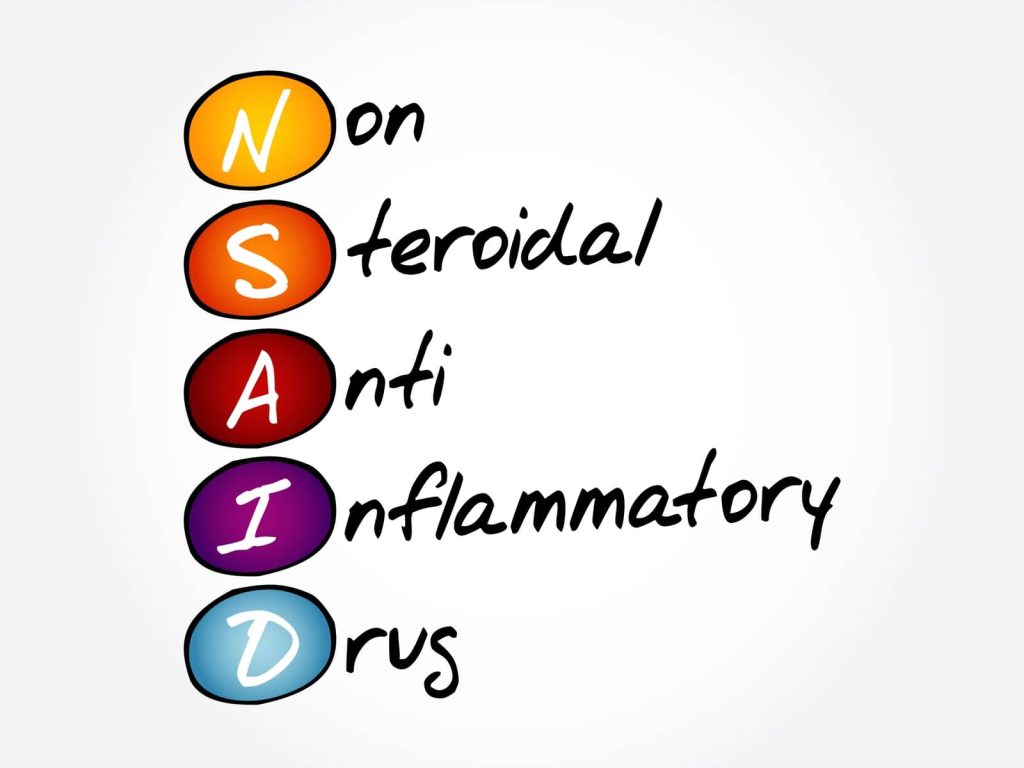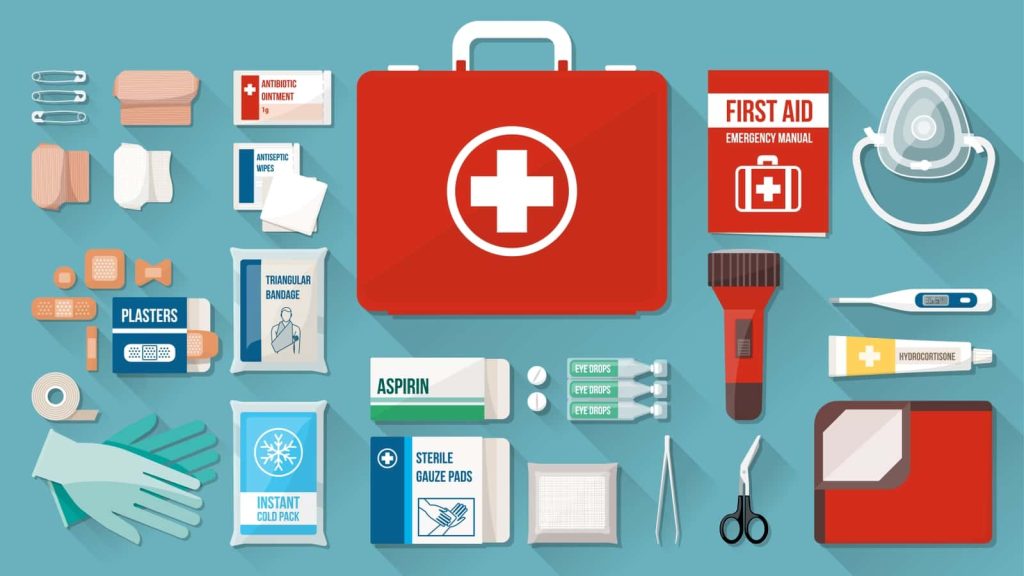Think Twice Before Taking NSAIDs

The use of Nonsteroidal Anti-Inflammatory Drugs, or NSAIDs, has been on the rise for the past few decades. This comes as no surprise to medical providers, as people live longer and incur pains and aches associated with aging. Employees in physically demanding jobs may rely on NSAIDs as well, self-treating musculoskeletal issues to remain productive and physically able to perform their duties.
The opioid epidemic increased national awareness on the potential dangers and addictive properties of opioids, leading some researchers to believe even more people will turn to NSAIDs. What’s alarming is that most NSAID users are not fully aware of how the drug class works, or the potential adverse side effects.
Recently a review of collected data from COVID-19 treatment centers by The Lancet has hypothesized a potential link between NSAIDs usage and increased risk to COVID-19 infection. This article will explain the potential downsides of NSAIDs use, the link to COVID-19, and what proper injury prevention and management can offer if continued use of NSAIDs is causing concerns.
What is an NSAID?
Non-Aspirin Nonsteroidal Anti-Inflammatory Drugs (NSAIDs) are a class of drugs commonly used for the management of issues such as pain and inflammation resulting from injury and disease. Examples of NSAIDs include ibuprofen, usually sold under the name brands Motrin and Advil. Others include naproxen, diclofenac, and celecoxib, to list a few.

What is the upside to using NSAIDs?
NSAIDs have an analgesic action. Simply put — they reduce pain, and research has proved them effective at managing pain from musculoskeletal injuries. NSAIDs inhibit the enzymes that synthesize prostaglandins. Prostaglandins are hormone-like substances that play roles in the contraction and relaxation of smooth muscle, the dilation and constriction of blood vessels, control of blood pressure, and autoregulation of inflammation.
What are the downsides of using NSAIDs?
Because NSAIDs modulate prostaglandins, they alter natural healing pathways. This change to our standard internal chemistry is believed to cause one of the significant side effects of NSAIDs: increased bleeding and concerns for users with ulcers. Some users experience more serious side effects, prompting the Food and Drug Administration (FDA) to publish a revised warning to NSAID use. The listed potential side effects are:
- The risk of heart attack or stroke can occur as early as the first weeks of using an NSAID. The risk may increase with more prolonged use of the NSAID.
- The risk appears to increase at higher doses.
- NSAIDs can increase the risk of heart attack or stroke in patients with or without heart disease or risk factors for heart disease.
- In general, patients with heart disease or risk factors for it have a greater likelihood of heart attack or stroke following NSAID use than patients without these risk factors because they have a higher risk at baseline.
The link between using NSAIDs and COVID-19?
The previously mentioned publication by The Lancet theorized based on the mechanism of infection of the Coronaviruses, binding to cells through angiotensin-converting enzyme 2 (ACE2), which is expressed by epithelial cells of the lung, intestine, kidney, and blood vessels. Individuals taking certain medications might be at increased risk of contracting the virus. These medications mentioned included NSAIDs (ibuprofen), which has been shown to increase the expression of ACE2.
However, at this time, no other major medical journal or governmental health organization has corroborated this hypothesis. The CDC, FDA, and The European Medicines Agency have all published statements indicating that the science does not support avoiding NSAIDs based solely on COVID-19 concerns. At this time, the scientific data has not conclusively established a link between NSAID usage and increase in the risk of infection.
NSAIDs in the workplace?
Safety and risk management professionals know that communication is critical when it comes to taking care of employees. Work-Fit promotes and implements best practices to avoid injuries in the first place by training and educating employees. The second-best option is to modify the workplace so that employees can be productive and reduce pain and discomfort. NSAIDs are merely masking the pain whereas Work-Fit staff can help employees remove the cause of the pain, and improve productivity.
Despite the continued debate of NSAID usage for pain management or its potential to increase the risk of infection, the CDC recommends that avoiding contact with infected people, sanitation, and proper handwashing practices are still the best ways to halt the spread of disease.
Take home
NSAIDs, like all medications, have positive and negative aspects best left to a licensed healthcare provider to prescribe. With COVID-19 infections, and vague guidelines circulating, employees should contact their healthcare provider to discuss if they should suspend NSAID usage, or switch to another type of drug to treat orthopedic pain. However, since most employees will not seek out medical assistance for minor illnesses and aches that lead them to use NSAIDs, education is vital. NSAIDs reduce pain, but if the root cause of the pain remains unaddressed, the issues are likely to return.
The most important question for a user to ask is, “Why?”
“Why do I need to take NSAIDs?”
If pain or discomfort are the primary motivators for taking NSAIDs, non-pharmacological interventions, including activity modification, stretching, and therapeutic exercise may be more effective.
To begin implementing evidence-based Injury Prevention Programs in your business, contact Work-Fit today to see how our services can help you and your employees!



